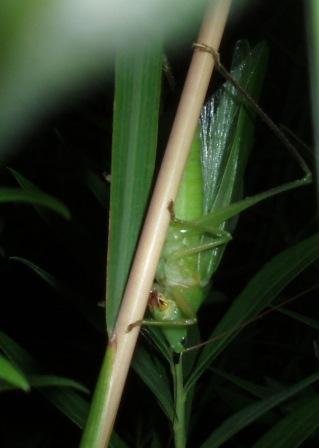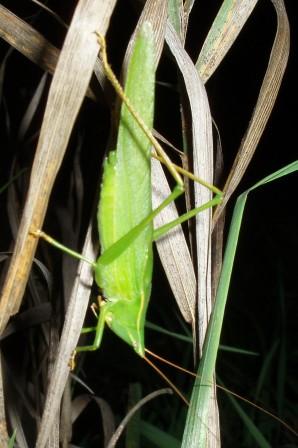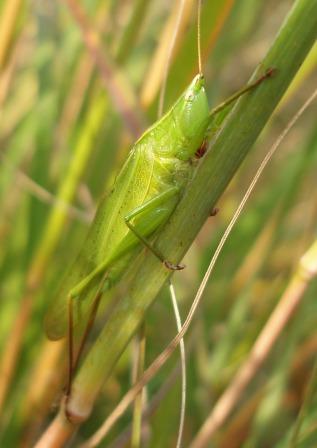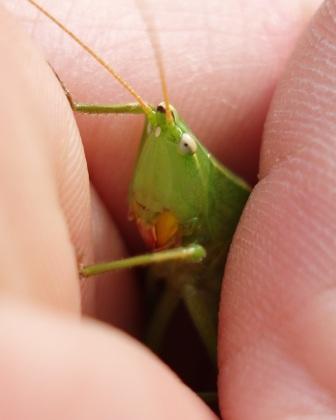by Carl Strang
The main focus of my research these days is traveling through the 22 counties of my survey area, seeking the singing insects that live in the Chicago region. I am building on previous years’ work, filling gaps in range maps. The currency I work in thus is county records. There are around 100 species known to have occurred here, and so the maximum total would be 2200 county records. This is not going to be the eventual result, however, because many of the species live only in limited areas within the region. For instance, last week I closed the book on the green-winged cicada.
They occur only in sand soil woodlands within the region. Though other counties have some areas with sand soils, I have searched them and failed to find the species. Their numbers clearly diminish at the periphery of their range. Four of these county records have been from this year.
Other species are widespread, and ultimately I expect to find them in every county. Two early season species now have filled maps as a result of my travels this spring and early summer: Roesel’s katydid, and gladiator meadow katydid.
There is learning involved in the process. Some species which historically have occurred in the area I have not yet found. Others I have found once or twice. At some point I become familiar enough with a species that I know how to find it. Then I seek it out in the appropriate habitat in the counties where I haven’t found it. The sulfur-winged grasshopper is an instructive example. This year I made a push to complete the map for this early-season species. Though I ran out of time before the end of its season, I got close.
Next year I will check sandy sites in two of the counties in Wisconsin, LaPorte County in Indiana, and Berrien County in Michigan. Though I suspect that sulfur-winged grasshoppers occur in every county, they are very few and hard to find away from sand soils. Though my own county of DuPage is marked, it is a clay soil county and over the many years I have lived here I have encountered fewer than 5 sulfur-wings in DuPage.
A final example is the northern bush katydid. I had heard two of these in the early summer of 2007, in woodlands in my county. I had heard none since. But a few days ago I went back to one of those sites and tried listening at night with the SongFinder, a device which reduces the pitch of sounds. Lo and behold, I discovered that Parson’s Grove at Danada Forest Preserve has a lot of northern bush katydids. I hadn’t realized that it was the deterioration of my hearing with age that had prevented my detecting them. Now I anticipate finding them in every county in the region.
So far this year I have accumulated 47 county records. I expect to end up with more than last year’s 174.










